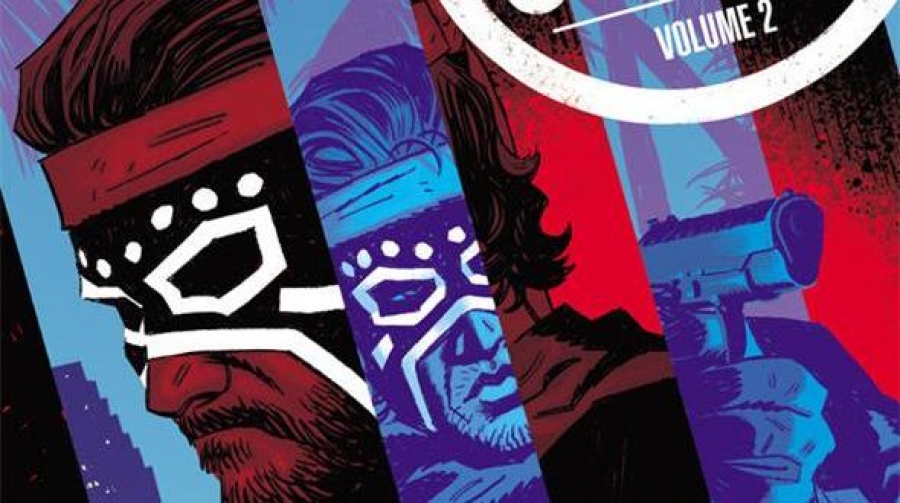The morally challenging adventures of John Lincoln continue in Dream Thief: Escape, the second volume of writer Jai Nitz and artist Greg Smallwood’s spectacular series from Dark Horse. John has finally started to get the hang of being a Dream Thief, which means ghosts seeking justice possess him while he sleeps and get said justice by murdering those who murdered them. John’s body is the vessel for judge, jury, and executioner, and after the deed is done, John wakes up with all of the various ghosts’ memories and skills, and, often times, a body that needs disposing. So, this means John is now an expert marksman, a bona fide lawyer, and has connections to the criminal underworld. It turns out he will need all of these recently acquired talents, along with the help of his best friend Reggie, the only person who knows John’s secret, to rescue his long-absent father from a strange and horrible fate.
Dream Thief has always stood out, thanks to its unique horror/thriller amalgam and less traditional setting of Georgia and the South as a whole. The series began with a simplicity that belied its elaborate world and premise, but as the issues went on, Nitz and Smallwood started peeling back the layers of the Dream Thief mythos, building story elements on top of one another, creating a labyrinthine supernatural mystery that you simply couldn’t look away from. With Escape, the twisting, turning plot gets even more wonderfully elaborate as flashbacks to the 1980s reveal there is more behind John’s being a Dream Thief than he ever realized. That’s enough story tidbits, because things get wild, weird, funny, and dark, and it’s fun to not know all of the punches before you have to roll with them. I will say that Escape will be so much more rewarding if you read volume one of Dream Thief first, because even though the premise is reintroduced nicely, these characters have already been through a lot, especially John. They have grown and planted lies and seeds of trust, and this volume starts in this new, shaky status quo.
As per usual, Smallwood handles all of the art, colors, and lettering, though here only for the first two issues, and his style is something that simply must be experienced. Full of rough, bold lines and heavy shadows, Smallwood’s art paints John’s world as a murky one that exists in the grey area where the ghosts mete out their justice, and his colors are perfectly muted, except during the sometimes flamboyantly neon scenes in the ’80s flashbacks. Those scenes carry a magic all their own, and both the story and art of the flashbacks are mesmerizing. For the last two issues, Nitz is working with artist Tadd Galusha, colorist Tamra Bonvillain, and lettering by Richard Starkings and Comicraft, and the result is dynamically different but captures the tone and spirit of Smallwood’s art. It is more clean and thin, and the characters look markedly different at first glance, but Nitz keeps his characters true and on-point, so even if the art may throw you for a moment, the emotional and story elements continue seamlessly, drawing you back in quickly. Galusha especially does a great job of matching the distinct humor and surprise that Smallwood often brings to his characters’ eyes, though their physiques may be more streamlined. There is a lightness to the art of these last two issues that blends well with the story, which itself gets increasingly darker, and together they maintain a delicate, compelling, and entertaining balance.
I am thoroughly intrigued to see where Dream Thief goes in the future with its bizarre, morally complex story and characters, and if Smallwood returns or if Nitz will continue to work with a new stable of talented collaborators. There are a myriad of pinups collected at the end of this volume, gathered together from the four single issues of Escape, and they pique curiosity and work on the imagination with their various depictions of John Lincoln. It is incredible to see so many different artists’ take on Dream Thief and its moral ambiguity. The pinups make it obvious that no matter which artists end up working on Dream Thief, the character of John Lincoln and the Dream Thief mythos will always exist, and only continue to grow.

